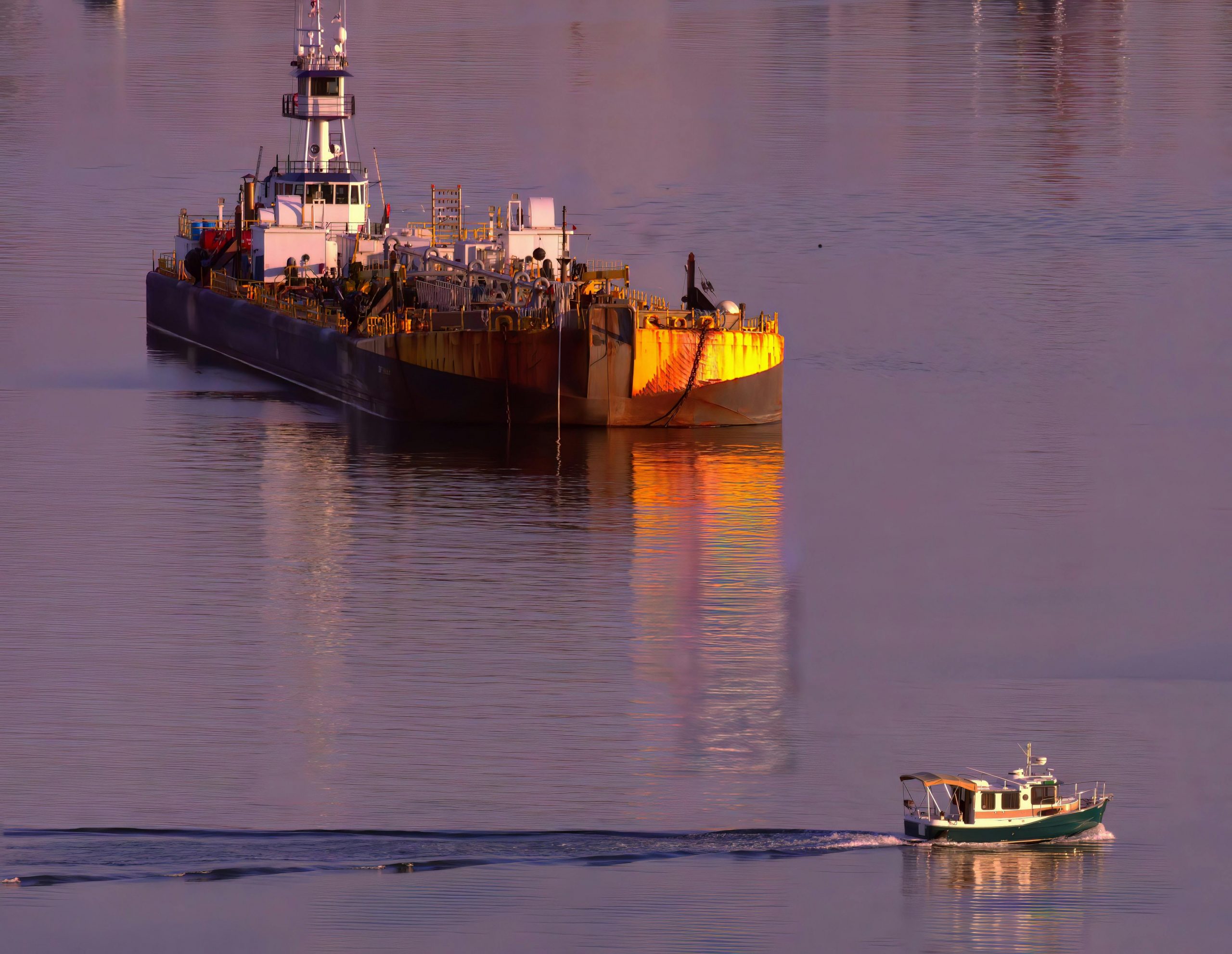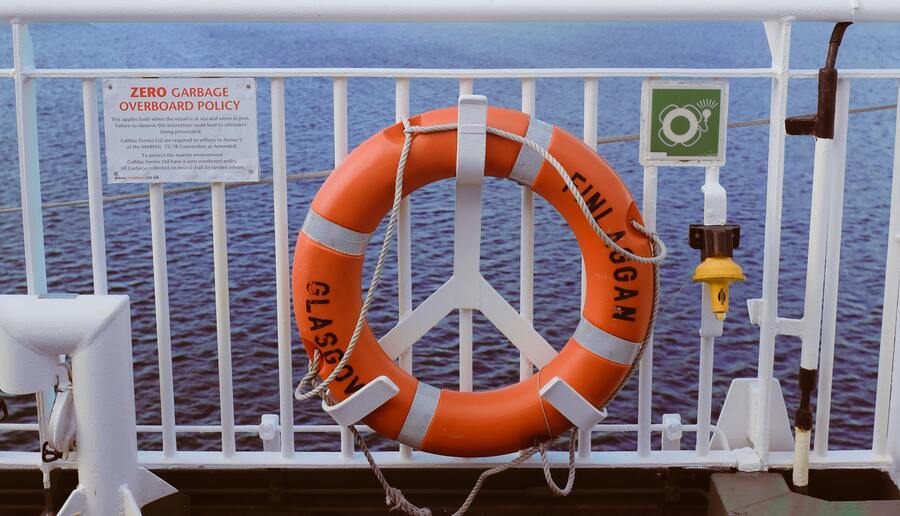It will come as a surprise to most people who work and enjoy their leisure time on the water in the UK that cold water shock is an all year round hazard and not just confined to the Winter months.
In short, cold water shock is a killer. Even in the warmest of Summers, the waters around the UK rarely warm up more than 16° to 17°C with the average UK and Ireland sea temperatures hovering around the 12°C mark. Winter sea temperatures drop to below 10°C and pose a severe threat to the life of any person who may fall inadvertently into the water.
So what is cold water shock and how does someone prepare for an unplanned entry into cold water? First of all, we need to understand a little about how humans react to water. Humans have an ancestral link with the oceans and though we’ve lost most of the biological ties from our oceanic past we still retain some of the survival instincts that were prevalent during our oceanic past: this is called the Mammalian Diving Reflex, and has alternative names such as the Diving Reflex or Diving Response.
A number of reflexes are activated when the human face is cooled by water or when we hold our breath in water. This includes a lower heart rate which conserves oxygen to increase our chances of survival. Peripheral vasoconstriction (the narrowing of blood vessels to reduce blood flow) directs blood towards the vital organs, which include the heart, lungs, and brain.
It’s common knowledge that babies hold their breath when they are underwater. The windpipe spontaneously closes to prevent water from entering the lungs. This reflex is initiated as soon as there is contact with water. Though this reaction disappears as the babies grow we humans still hold our breath instinctively as we enter the water, whether intended or not.
Problems begin when the water temperature is cold. I refer here to a temperature of 15°C or less. Whereas immersion in water causes humans to hold their breath, the mammalian diving reflex is overcome in cold water; and strangely this occurs not immediately after immersion but approximately after 30 seconds and for about 3 minutes. The signs are very clear: the breathing rate increases rapidly where the casualty is seen gulping for air, which can cause hyperventilation causing dizziness and a lack of coherence. The ability to hold your breath decreases from a minute in normal circumstances to 10 seconds or less. The cold water cools the skin down and surface blood vessels contract causing a sudden rise in blood pressure which can lead to cardiac arrest or stroke. Most dangerous of all, the casualty may inhale water or gasp for air even if they’re fully underwater which could result in aspiration of water and drowning.
Open sea swimmers, kayakers, surfers and other water users whose activity involves direct contact with the water mitigate the effects of cold water shock by regular exposure and training; it’s well known that many open sea swimmers train by sitting in cold baths to create a 'muscle memory' of the effect of cold water immersion. This is neither practical nor desirable for those of us who prefer to be on the water as opposed to being in the water. So, how do we prepare ourselves adequately so that in the event of an unplanned immersion we don’t succumb to cold water shock?
The first consideration has to be to take some form of sea survival training, with an RYA, MCA or other approved training centre. Though courses are run in warm swimming pools in a controlled environment the experience of being in the water in your sailing clothes, desperately trying to pull yourself into a liferaft or on to a pontoon will be etched in your memory forever. The practical experience of entering the water, maybe from a height, and having to deploy a lifejacket, or even don a lifejacket in the water if the training requires, will give you a sense of what it must be like to be in a similar situation at sea in cold water.
I recall doing a sea survival course in an unheated, open-air swimming pool on a stormy November night. I will never forget the experience of the cold, the exhaustion and the physical effort to keep my head out of the water and retain a clear airway - and this was training! The message is hammered home firmly how important training is to aid survival at sea. The experience will make anyone more tuned into safety on a vessel so that going overboard involuntarily is a major safety consideration when working on board.
Secondly, it’s imperative to wear the correct clothing for the sea conditions and the environment. Of all my rough weather clothing by far my favourite is the Fladen One Piece Blue/Yellow Rescue System Flotation Suit. At a fraction of the cost, this flotation suit outperforms expensive labelled sailing clothing I’ve owned for years. The suit is EN 393 certified as a Flotation Suit and ISO-15027-1 which certifies the suit as an Immersion Suit which includes body heat retention standards. (ISO 15027-1:2012 specifies performance and safety requirements for constant wear immersion suits for work and leisure activities to protect the body of a user against the effects of cold water immersion, such as cold shock and hypothermia.) Additionally, the suit is a constant wear suit so it’s comfortable to wear as well as warm and has flotation capabilities. I’ve worn this in a storm in August in the UK as well as in minus degree conditions and it remains top of my list of kit to go to sea with.
I wear seven layers of clothing in winter conditions. After many months of testing, I found that thermal base layers, mid layer and outer layers all combined ensured enough warmth without compromising movement. From a cold shock perspective, these layers trap warm air and would mitigate the first effects of cold water immersion enough for me to sort myself out in the first moments of being in the water and hopefully avoiding the worst of the effect of cold water. It has to be added that appropriate footwear and thermal socks are equally essential and shouldn’t be overlooked.
Despite national campaigns by the RNLI and other emergency services and the RYA and MCA highlighting the need to wear a lifejacket when at sea, I’m still amazed at how many people go to sea without wearing one. Wearing a lifejacket will be a lifesaver if the wearer experiences cold water shock. A casualty suffering from cold water shock will become exhausted quickly and will suffer from swim failure, which can lead to drowning, due to water aspiration, weakness or confusion. Deploying a lifejacket will assist the casualty by keeping their body face up and the head clear of the water so that their airway is clear. The casualty will then be able to adopt the HELP position (Heat Escape Lessening Position). This position protects the body's three major areas of heat loss (groin, head/neck, and rib cage/armpits). Wearing a lifejacket allows the casualty to draw their knees to their chest and arms to their sides. Without a lifejacket, the casualty will be flailing in the water to maintain buoyancy and in doing so will expend a lot of energy and tire, and most probably take in mouthfuls of water too which will incapacitate them further.
Despite training and wearing the correct clothing and taking all the necessary actions to minimise the risk of entering cold water, there’s no real way to prepare for an inadvertent cold water immersion except to be aware of the human mechanics when in cold water.
So here are some tips:
It will be cold, so try and keep your head above water and focus on controlling your breathing. The shock will pass and you’ll be able to take control easier, however, time will be of the essence as hypothermia will take hold quickly. Assess the situation: Are there other casualties in the water too? Do they require your assistance? Is there a flotation device, rescue aid or liferaft nearby and is it accessible? Call for help if you can - either by voice, whistle, VHF radio, PLB or any other device you have with you. If you’re close to shore then attempt to swim to safety. If you’re wearing a lifejacket then swimming on your back may be a better option. If you’re injured or in a group and the shore is at a distance then stay where you are - huddle together to help morale and decrease heat loss. If you’re alone, try and exit the water in any way, by climbing on to a floating object or a liferaft. If not then focus on maintaining your energy by adopting the HELP position.
Once assistance is at hand, remove yourself or your casualty from the water. Place the casualty out of the wind and wet conditions; if there’s no cabin on board then create a makeshift tent or cover from a sail or boat cover, place a blanket or towel on the deck to decrease heat loss. Remove all wet clothing gently. The casualty will be in shock and won’t be very responsive so could be injured further by rough removal of clothing. Once they’re wearing dry warm clothing, place them in a TPA - a Thermal Protective Aid. It’s been known for two people to be placed in one to warm each other from their combined body heat. If the casualty is responsive and can swallow give them a warm drink and energy food such as chocolate, but don’t give them alcohol. It’s imperative they seek medical advice as hypothermia could set in and further complicate the situation.
Finally, the sea in the UK can remain cold well into May so whilst the current cold snap will make us reach for our thermals it would be wise to keep them close by until late spring.
Meuryn Hughes is a commercial skipper and Master of Yachts with over 25 years experience in the maritime industry. He is the founder and owner of OneOcean Limited (www.oneocean.co.uk) a maritime training and charter company based in Cardiff on the Bristol Channel and OneOceanTec (www.oneoceantec.co.uk) an online store selling marine and outdoor electronics and equipment.


